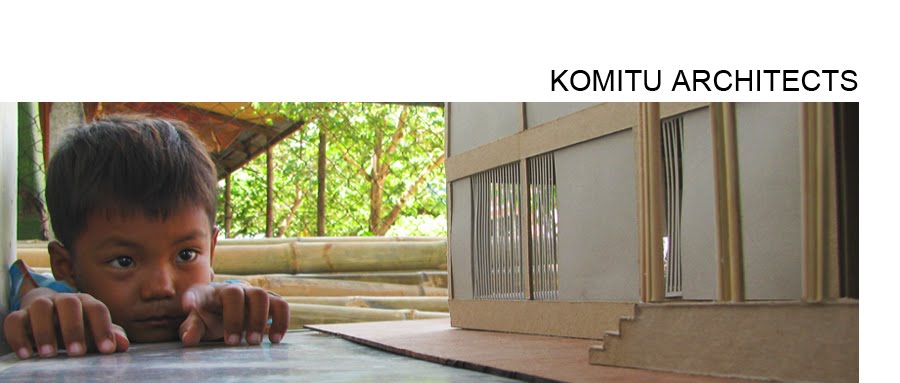
After Kevin arrived on Monday, our work with the bamboo became much more accurate thanks to his expertise and equipment he brought with him.

Testing the water from the treatment pools with a borate test strip, that are normally used for testing swimming pools, showed that there actually is some Borax in our pools. Nice.

We also performed a simple jar test to see how much chemicals we had managed to get into the bamboos after a week of treatment. A small piece of the wall of the bamboo was taken from next to the second node, the outermost and innermost layer of tissue was removed and the rest was chopped into even smaller pieces. Clean tap water was put into a jar and tested neutral after which the bamboo pieces were put in. After some time the water was tested again and the amount of borax in the tissue was defined. The first test didn't give a proper reading but we repeated the test on site and a good amount of absorption was verified.

After the bamboos had been in treatment long enough, we lifted one end out of the pool to let most of the water flow out of the other end. After that the bamboos were once again lifted to the cleaning racks and excess salt (which could be felt as mucus on the surface of the bamboos) was washed away with running water.

Bamboos drying in a vertical position after the treatment.

Kevin also brought a moisture meter with which we can measure the fresh, the treated and the dried bamboo and see when it has stabilized after the treatment and is therefore safe to build with. If you start building too soon after the treatment, the bamboos still have extra moisture in them and there is a risk of shrinkage and the joints failing when it stabilizes.

The difference in the cuts made by different saws. The one on the left has been cut with a fine arbor saw so the surface is smooth and the open ends of the vascular tissue can still be seen, the one on the right has been cut with a rough frame saw and no open tissue can easily be seen. The finer cut with its open tissue makes absorption of chemical water easier.

The treated bamboos were divided into the ones that qualify as beams and the ones that qualify as columns and marked accordingly. Roughly described, the column poles need to be sturdy, straight and as evenly thick as possible from top to bottom to carry the vertical loads through them. Most of the beams in our case are quite short so they were easier to pick because even in the poles that curve from one end, there might be a long enough piece of straight pole in the other.

Kevin explaining the selection process to Peter (our contractor) and Sreng (an engineering student who is working on the structures of the center together with Peter).

No comments:
Post a Comment